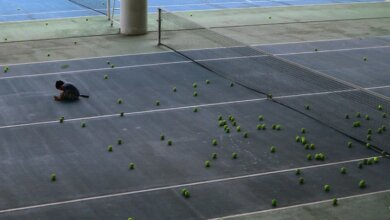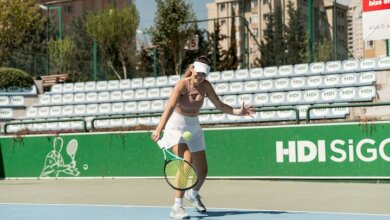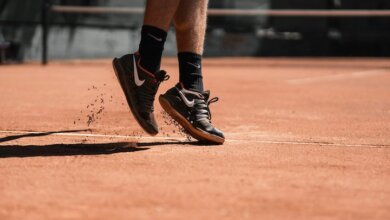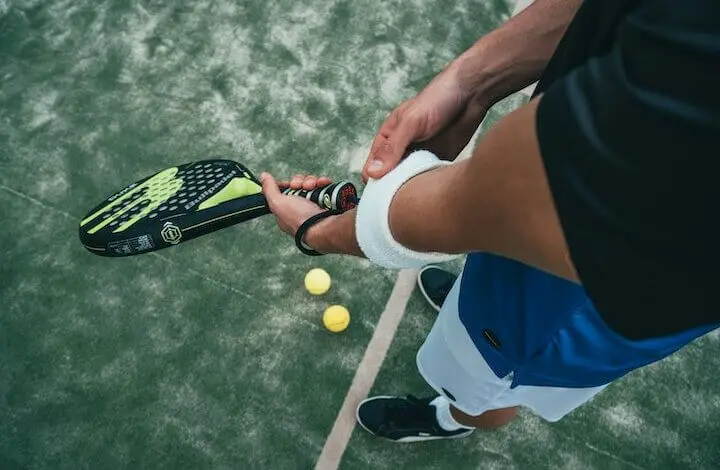
We're an affiliate
We hope you love the products we recommend! Just so you know, we may collect a share of sales or other compensation from the links on this page. Thank you if you use our links, we really appreciate it!
You’ve probably heard of tennis elbow before—or maybe you’re feeling it right now and just didn’t know what to call it. That dull ache on the outer part of your elbow. That sharp pain when you grip the racket. That weird feeling that your forearm’s just tired all the time. Yeah, that’s tennis elbow. And here I am going to tell you how to fix tennis elbow with technique.
Now here’s the thing most people get wrong: they try to fix it with rest, creams, or maybe a brace. And while those might bring some temporary relief, they don’t fix the real issue. You want to know how to fix tennis elbow with technique? You start by looking at how you play, not just how much you play.
Let’s take it step by step. I’ll walk you through everything I’ve learned, not in some complicated, medical-jargon kind of way—but like a friend just explaining what’s worked.
Table of Contents
Key Takeaways
- Tennis elbow often comes from poor form, not just overuse.
- A softer grip reduces strain on your tendons.
- Swing from your shoulder, not your wrist.
- Smooth follow-throughs protect your elbow.
- Practicing technique in slow, focused ways speeds healing.
What Is Tennis Elbow (And Why Does It Happen)?
Tennis elbow is just a nickname for something called lateral epicondylitis. Fancy, right? All that means is your tendons on the outside of your elbow are overworked. They’re tired. Inflamed. Maybe even slightly torn.
But here’s the part nobody tells you: it’s not always about how often you play. It’s usually about how you’re using your arm, especially when your technique puts too much strain on small muscles that weren’t built for that kind of stress.
Most times, tennis elbow comes from:
- Repetitive arm motions.
- Overusing the wrist during swings.
- Gripping too hard.
- Playing with poor form.
So yeah, creams and straps might ease the pain. But if your swing is still off? That pain’s coming right back.
The Real Fix Isn’t a Cream—It’s Your Form
You know that feeling when something just clicks during a match? Like when your backhand finally feels smooth, or your serve just lands exactly where you want? That’s what we’re aiming for with your technique—except this time, the goal is to take pressure off your elbow.
If you really want to know how to fix tennis elbow with technique, you have to be willing to break down your strokes and build them back up. And I know that sounds like a lot. But trust me—it’s not about being perfect. It’s about being aware.
Start by asking yourself:
- Am I swinging too hard?
- Is my arm doing all the work?
- Do I tense up during long rallies?
Because those little habits build up—and your elbow pays the price.
Grip Technique: How You Hold the Racket Matters
Let’s talk grip. This is where most people mess up and don’t even realize it.
If your hand is squeezing the racket like it’s a life raft, your elbow’s going to feel it. Tension in the fingers becomes tension in the forearm. And that tension goes straight to the elbow.
Here’s how to fix it:
- Use a relaxed grip. You should be able to wiggle your fingers slightly while holding the racket.
- Make sure your grip size isn’t too small. If it is, you’ll naturally grip harder to compensate.
- Keep your wrist aligned with your forearm—don’t bend it awkwardly inward or outward.
A softer grip lets your bigger muscles take over, so your small elbow tendons don’t have to overwork themselves.
Swing Mechanics: How to Fix Tennis Elbow With Technique Mid-Rally
This is where a lot of magic happens. Or pain. Depending on how you swing.
The most common swing mistake? Letting your wrist do too much.
When you’re tired, or trying to add spin, or just reacting fast—it’s easy to flick the wrist. But here’s the catch: that little flick adds a lot of strain to your elbow.
Instead, here’s what you should do:
- Use your shoulder as the main driver of your stroke.
- Keep the swing fluid—think of it like a wave, not a jab.
- Let your body rotate—don’t isolate your arm.
One trick that helped me? Think of the ball as something you guide, not something you smash. That shift alone changed how my forehand felt and took pressure off my elbow.
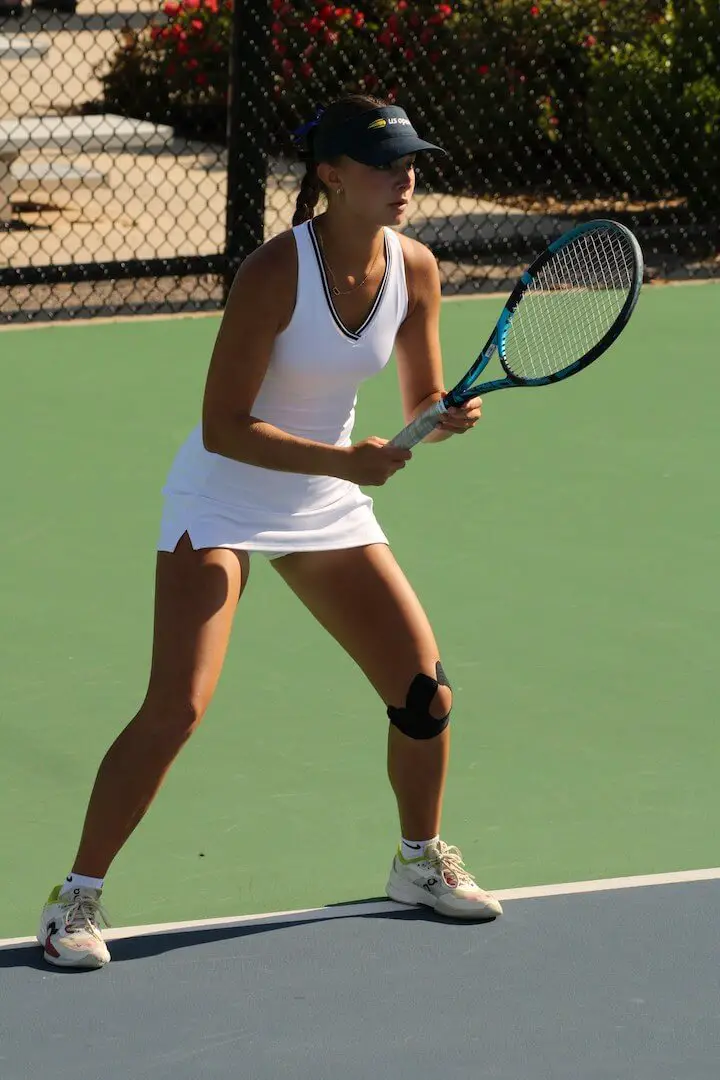
Follow-Through and Recovery: The Overlooked Fix for Tennis Elbow
I never used to think about follow-through. I’d hit the ball and be ready for the next shot. But the way you finish a stroke actually says a lot about how you’re using your muscles.
If your follow-through ends short, tight, or feels like you‘re “snapping” your wrist—your elbow’s getting punished.
Here’s what you want instead:
- Let your racket finish naturally across your body.
- Avoid locking your elbow mid-swing.
- Keep the movement smooth and relaxed—no sudden jerks.
Fixing your follow-through isn’t about looking fancy. It’s about giving your elbow a break after the impact.
Practice Drills That Help Fix Tennis Elbow With Technique
Okay, this is where you really get to retrain your body. You don’t need a coach or even a partner—just some quiet time and a little patience.
Here are the drills I still use:
1. Mirror Shadow Swings
- Stand in front of a mirror.
- Do slow, smooth forehands and backhands.
- Focus on grip, shoulder rotation, and follow-through.
2. Short-Court Touch Drills
- Stand close to the net.
- Use light, relaxed swings to rally back and forth.
This teaches you to control the ball without overhitting.
3. Phone Video Check
- Prop your phone up and record your swing.
- Watch your wrist, grip, and follow-through.
It’s weird seeing yourself play—but super helpful.
These aren’t about hitting hard. They’re about creating new habits so your technique helps your elbow heal.
Check Out: Ultimate String Tension Guide for Beginners: Find Your Perfect Setup
Rest and Rebuild (Without Stopping Completely)
I get it. The idea of stopping tennis sounds awful.
But here’s the good news: you don’t have to stop. You just need to shift how you practice.
This is what active rest looks like:
- Play with intention, not intensity.
- Limit your sessions to technique-only drills.
- Use soft balls or mini-tennis to reduce impact.
You can even focus on one side—like hitting gentle forehands only—so you give your elbow space to recover while reinforcing good habits.
The goal is to rebuild your game around better movement. That way, when you’re fully back, you’re not just pain-free—you’re playing smarter.
Conclusion
If you’ve been trying to fix tennis elbow with rest, braces, or creams, I get it. It’s what most of us do first.
But if you want a real fix—something that keeps you on the court without fear—you have to look at your technique. You have to change how you grip, how you swing, how you recover.
That’s how to fix tennis elbow with technique. Slowly. Gently. With awareness.
You don’t need to quit. You don’t need to power through pain.
You just need to move differently.
Frequently Asked Questions
Can I still play tennis while recovering from tennis elbow?
Yes. As long as you’re focusing on light, controlled technique instead of high-intensity matches, you can keep playing while your elbow heals.
Should I use a brace or not?
A brace can help reduce pain short-term, but it’s not a fix. Don’t rely on it. Fix your swing instead.
How long does it take to feel better with technique adjustments?
Some players feel improvement within 2–4 weeks if they’re consistent. But everyone’s different. Stick with it.
What kind of racket or strings help reduce tennis elbow?
Look for a racket with good shock absorption and soft, low-tension strings. But even the best gear won’t help if your technique is off.

